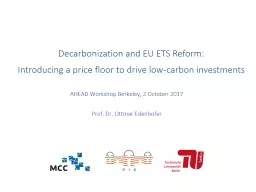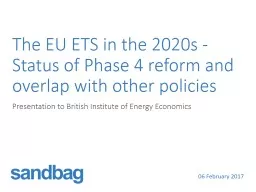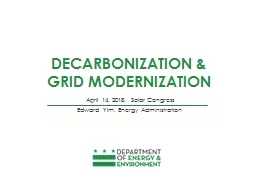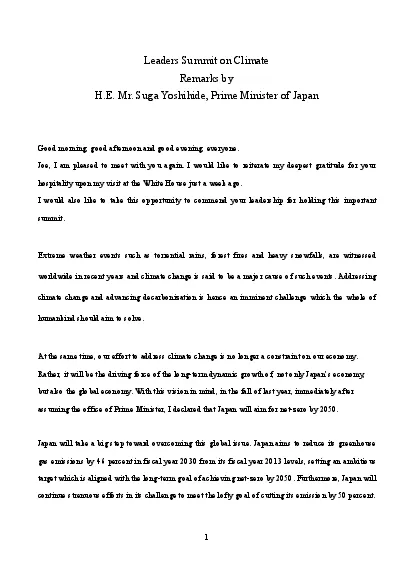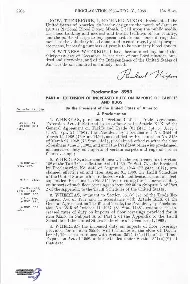PPT-Decarbonization and EU ETS Reform : Introducing a price floor to drive low-carbon investments
Author : alexa-scheidler | Published Date : 2019-10-30
Decarbonization and EU ETS Reform Introducing a price floor to drive lowcarbon investments AHEAD Workshop Berkeley 2 October 2017 Prof Dr Ottmar Edenhofer EUA price
Presentation Embed Code
Download Presentation
Download Presentation The PPT/PDF document "Decarbonization and EU ETS Reform : Int..." is the property of its rightful owner. Permission is granted to download and print the materials on this website for personal, non-commercial use only, and to display it on your personal computer provided you do not modify the materials and that you retain all copyright notices contained in the materials. By downloading content from our website, you accept the terms of this agreement.
Decarbonization and EU ETS Reform : Introducing a price floor to drive low-carbon investments: Transcript
Download Rules Of Document
"Decarbonization and EU ETS Reform : Introducing a price floor to drive low-carbon investments"The content belongs to its owner. You may download and print it for personal use, without modification, and keep all copyright notices. By downloading, you agree to these terms.
Related Documents

